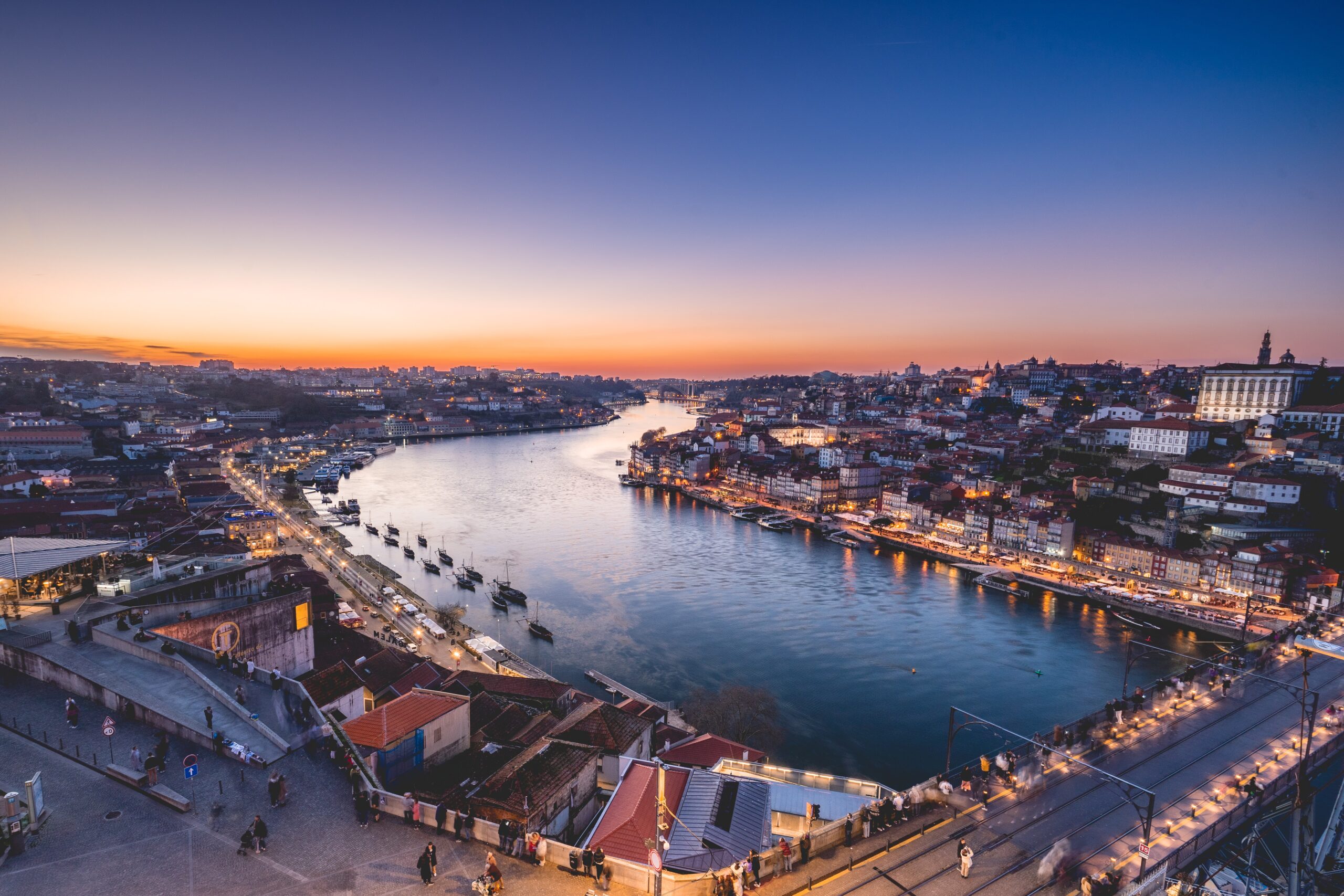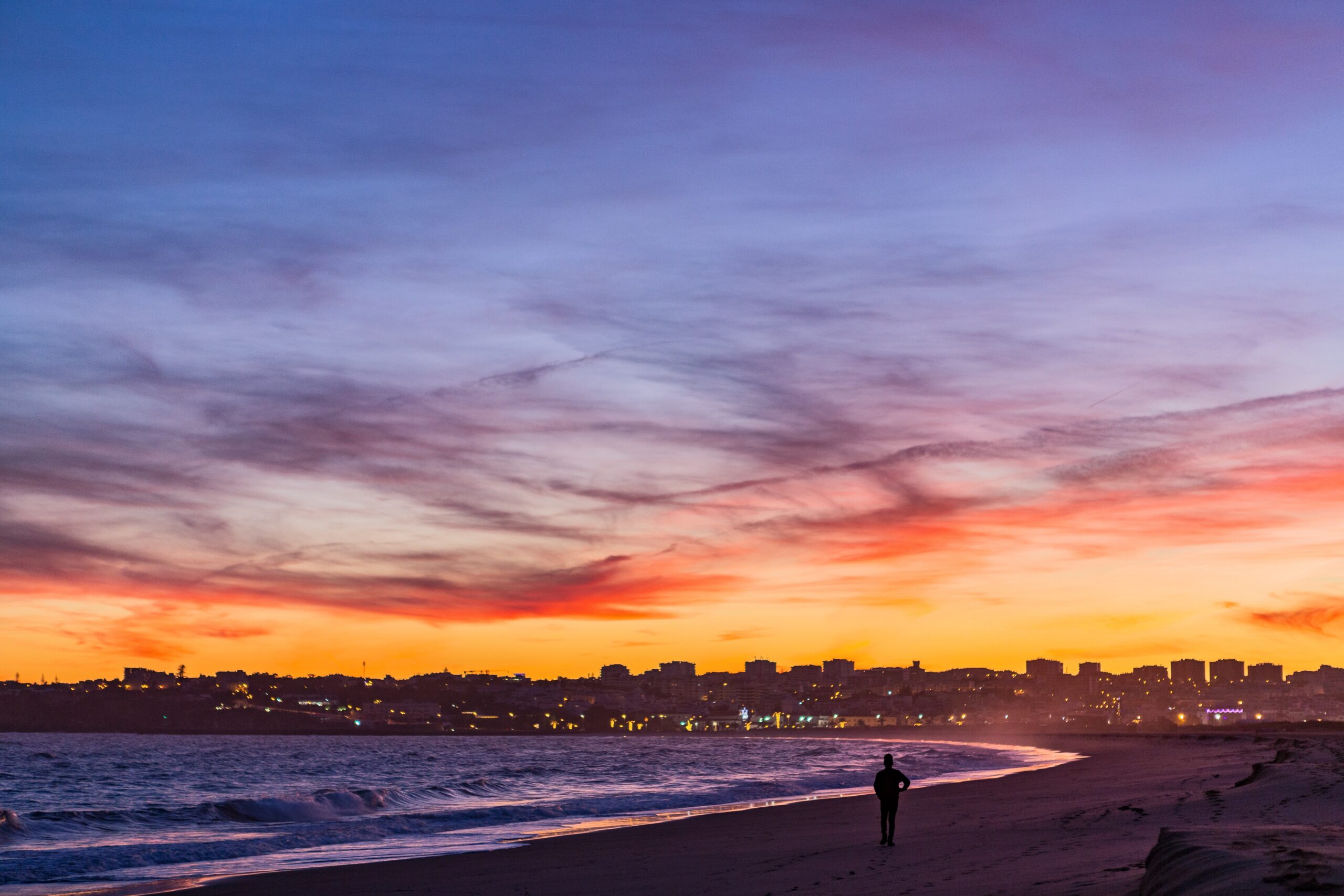Region
Southern Europe

Best Time to Visit
Portugal
- Season(s): Spring, early Fall
- Month(s): April-June, September-October

Uniquely Popular For
Portugal
Serene beaches, exotic food especially the widely popular Pastéis de Belém (Portuguese tarts), rustic alleyways, designer footwear, beautiful and colourful coastal towns, boating, surfing, diving

General Tourist Attractions
Portugal
- Lisbon, Portugal’s capital is a gem of a city. I instantly fell in love with it. It has mystique, history, beautiful and friendly locals, and great food. Take a trip to the Castle of St Jorge. Explore the churches. Listen to Fado.
- Batalha is one of Europe’s greatest Gothic masterpieces. Walk through the gigantic and impressive gothic doorway and see the interior featuring 16th-century stained-glass windows. The building has seven chapels that are unfinished.
- Azores islands, These islands lie about 930 miles from Lisbon (a two-hour flight) in the Atlantic Ocean. Each of the islands offer a slow-paced way of life, unique wildlife, and stunning beaches. These islands are very off the beaten track and a good “out of the way” place to go.
- Lagos is the place people go to party rather than see historic sites or sit in pretty squares. It is an excellent place to soak up the sun and then go out for dinner a drink. During the summer months, this is one of Europe’s premier party destinations with young travelers.
- Porto is one of Portugal’s most colorful cities, where getting lost and meandering the narrow alleyways and steep staircases all leading to the Douro River makes for a fun afternoon. Hop on a river cruise, visit the Lello & Irmão bookstore, see a museum, or visit the surrounding Duoro Valley and its many vineyards.
- Evora, a small town that offers an array of beautiful and historic buildings. Its most famous landmark is the Temple of Diana but there is also the Praça do Giraldo, the town’s main square. This is small-town Portugal at its best.
- Religious Monuments in Braga, The beautiful city of Braga provides many Baroque monuments, including one of the country’s best-known sights, the Bom Jesus Sanctuary. The old and the new city are connected by the main square, Praça da Republica.
- The Abbey of Santa Maria is Europe’s largest building of the Cistercian order. You can wander around the abbey at your leisure and find out more about the different parts of the building: its five cloisters, seven dormitories, a library, and huge kitchen.
- Knights Templar in Tomar, The big attraction in the town of Tomar is the Templar Castle and Convent of Christ on the hill. It was the headquarters for the Knights Templar in the 12th century and contains one of the country’s most impressive monuments, the Convent of Christ.
- Aveiro, around 45 miles south of Porto, lies on what’s known as the silver coast. This is a small university town, and part of the historic center is built on canals, giving rise to the name “the Venice of Portugal.” The winds here create good opportunities for windsurfing and surfing.
- Coimbra is home to the world’s ninth-oldest campus. There is a famous, beautiful old library that you can tour, but the real thing to do in Coimbra is just to wander through the many old streets. There are many churches and gardens to visit.
- Faro is a common starting point for tours of the Algarve region, which is an area full of great beaches, seafood, and plenty of tourists. Faro itself isn’t a beach city, but has a lovely old town and is a great place to spend a day before you hit the real resort areas.
- Cape Sagres is the most south-western point on the European continent. It was here that Henry the Navigator had his famous navigation school, which gave birth to the careers of some of the most famous explorers in history.
- The Mosteiro dos Jerónimos, a symbol of the Portuguese Golden Age of Discovery
- Lisbon’s Oceanarium, which is hands down the most popular family-friendly visitor spot
- Guimarães is regarded as the historic birthplace of Portugal, This extensive history is reflected in the varied monuments and sights contained within the delightful cobbled streets of central Guimarães. There is an ancient castle, a medieval palace, a Gothic monastery and pretty streets filled with traditional houses - Guimarães is a joy to explore.
- The medieval city of Porta, which is one of the picturesque towns outside Lisbon.
- The colourful Pena Palace, which sits atop a hill is one of Europe’s most beautiful monument.

Memorable Pursuits
Portugal
- Visit the Santos neighborhood to brush shoulders with the capital's hippest residents or play the tourist in Belem, Lisbon's cultural epicenter.
- Grab a snack in the historic Pasteis de Belem and sample their famous custard tarts
- Take a streetcar up the winding streets of the Bairro Alto (or high neighborhood) and stop for a beer and some traditional Fado live music.
- Sip local Vino Porto from the Douro Valley
- Visit the 17th century Nicolau Nasoni built Clerigos Tower, and take in a panoramic view of the city.
- Visit the romantic manor homes in this mountain village of Sintra just north of Lisbon.
- See the crystal blue waters of the Algarve coast and swim with the dolphins at the Zoomarine Park.
- Stroll through the colourful town houses of Sintra, the go-to spot of many famous poets and writers of English literature
- The Ocean Revival Underwater Park, which is also the largest artifcial underwater park is a haven for divers all around the world.
- If you’re a bookworm, Bertrand in Lisbon is the place for you, which also happens to be the world’s oldest book store.
- Nazaré, a place off the coast of Portugal, boasts of the world’s biggest waves, and attracts surfers from all over the world.
- Fado is a very important Portuguese tradition, with at least 200 years of history. It’s very haunting and emotional music, sung by an individual. Most of the songs follow a theme of loss and mourning. Performances normally take place in restaurants during dinner.
- Vila Nova de Milfontes is at the heart of the wild and rugged Alentejo coastline, a region of powerful seas, windswept landscapes and vast beaches. This is a destination if you love the raw beauty of nature or are an outdoors person, enjoying activities such as hiking, cycling or surfing.

Something Leisurely
Portugal
- Pay a visit to the cafe-lined streets in the neighbourhood for a refreshing change
- Pastéis de nata is a Portuguese staple and you’ll find these delicious custard-filled tarts at any bakery. They’re a must for an authentic food experience.
- Evora is famed for its beautifully preserved Roman Temple, gothic cathedral and creepy Bone Chapel, all set within a characterful historic centre.
- The beaches of Tavira lie within the protected coastline of the Parque Natural da Ria Formosa, and are some of the finest pristine beaches in the entire Algarve. Tavira has a rich fishing heritage and this can be savoured by the delicious fish-based regional cuisines, served up in the numerous family restaurants within the historic centre.
- Stroll through the secluded beaches of Lagos with its red rock cliffs and rejuvenate your soul.
- Indulge in the wining and dining of the Douro Valley, right in the lap of the mountains.

Quick Tip(s) from the Locals
Portugal
- Avoid Euronet machines as their charges can be extortionate.
- If you intend to visit museums and monuments, there are two important things to consider. One is that some offer free admission on Sunday mornings or discounts with the local tourist card. The other is that most are closed on Mondays so you’ll need to check and plan around this if you have your heart set on seeing something specific.










